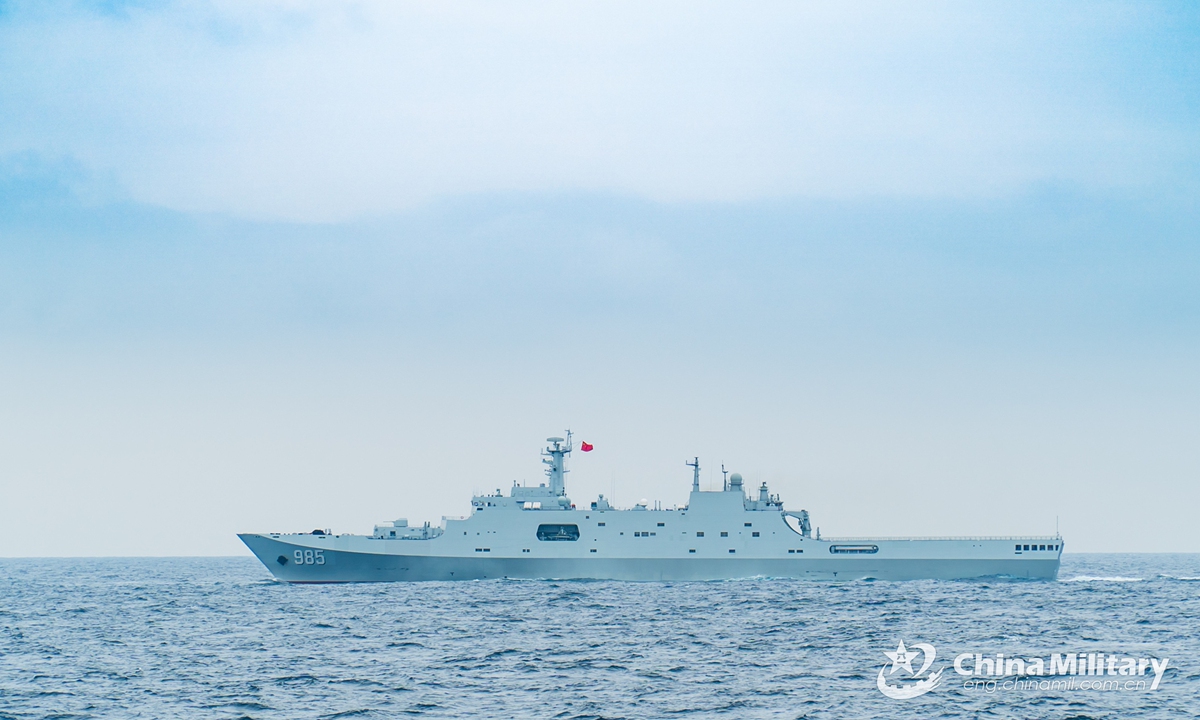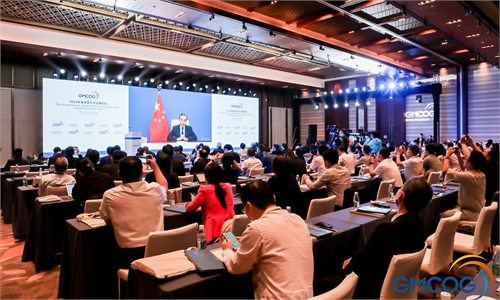
The amphibious dock landing ship Qilianshan (Hull 985) attached to a destroyer flotilla with the navy under the PLA Southern Theater Command steams in waters of the South China Sea during a four-day-long realistic-combat training exercise. Photo:China Military
Military observers said rarely-seen large-scale anti-submarine drills recently staged by the US and Japan in the South China Sea targeted China and the conventional submarines of the People's Liberation Army (PLA) Navy.
The Japan Maritime Self-Defense Force's (MSDF) Twitter account said on Tuesday that "JS Kaga, JS Murasame, the JMSDF submarine and P-1, conducted a bilateral exercise with the USS P-8A," while noting that "This is the first time for the JMSDF submarine to conduct an anti-submarine warfare exercise with the @USNavy in the South China Sea."
The Tuesday exercise included anti-submarine training, which involved tracking a sub underwater, the NHK reported.
Putting together the fact that both the P-1 maritime patrol aircraft and the P-8A Sea King patrol aircraft have particular anti-submarine capabilities and the first deployment of an Oyashio-class submarine [other than a more advanced Soryu-class one], the message is clear, observers said, that the anti-warfare drills were targeting PLA conventional submarines.
Even Japanese local media cited local analysts as saying that the joint drills were designed to "highlight the Japan-US partnership and to realize a free and open Indo-Pacific, and also to keep China in check."
Compared to the larger, faster yet noisier nuclear submarines, conventional ones have unique advantages in the complex environment in parts of the South China Sea. "They could use the background noise from merchant ships in the South China Sea as well as the depth of the water as disguise to keep them from being detected," Song Zhongping, a military expert and TV commentator, told the Global Times on Wednesday.
Another military expert said on the condition of anonymity that this could also enable conventional submarines to ambush US warships. And the US Navy borrowed the Japanese submarine to serve as an imaginary enemy to hone their anti-submarine capabilities in the South China Sea.
Using an MSDF submarine as target, Japanese and US vessels and aircraft searched the area and confirmed the steps to be taken in the event of an attack, Japanese news outlet The Yomiuri Shimbun reported.
"This is the first time [Japan and the US] have conducted anti-submarine drills in the South China Sea. The fact that we can conduct drills in any sea shows the high level of interoperability between Japan and the US," MSDF Chief of Staff Admiral Hiroshi Yamamura said at a press conference on Tuesday.
However, Song pointed out that the US and Japan's attempt to hunt PLA submarines, be they conventional or nuclear-powered, is a daydream, as the South China Sea is too big for these few countries - even counting the naval forces of Australia - not to mention that increasingly advanced submarine technologies China possesses.
Song suggested that China should continue to train its naval forces and prepare for war, and our submarines should not only be in the South China Sea but in other countries' waters to break the strategic encirclement of countries such as the US and Japan.


